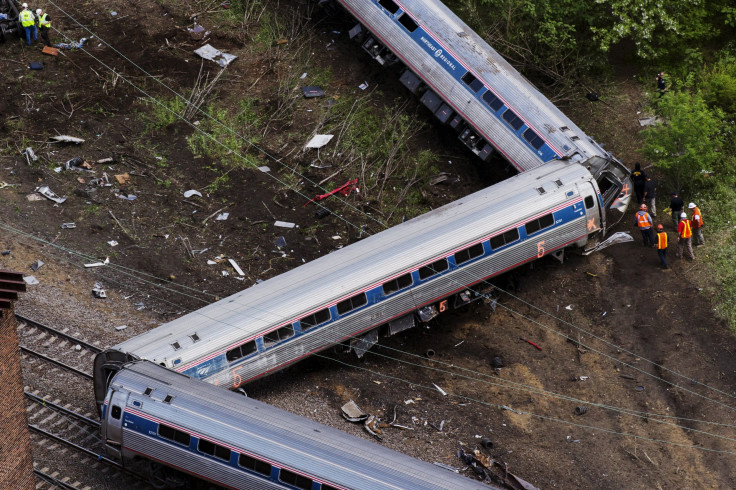Amtrak Train Disaster: 106 MPH Speed Clocked, Emergency Brakes Applied In Full

The National Transportation Safety Board has concluded that the Amtrak train that derailed in Philadelphia late Tuesday night was traveling at 106 miles per hour into a sharp curve, more than twice the designated speed limit, causing it to derail, killing at least seven people and injuring 200 more. Full “engineer induced braking” occurred at that speed, and within seconds the train had derailed, according to NTSB member Robert Sumwalt.
The NTSB will be on the scene for approximately one week collecting evidence for its investigation into the incident. The train’s excessive speed is the primary suspected reason behind the derailment, but the agency has not said exactly why the train was traveling so fast, and whether it was attributable to “human performance” or mechanical failure. The NTSB has obtained the train’s forward-facing video and event recorder, or black box, which is on its way to an NTSB lab in Washington.
“We are here not only to determine what happened but why it happened,” said Sumwalt, adding that the NTSB was on scene primarily “to collect perishable evidence” for its investigation and not necessarily to immediately determine the cause of the accident.
Sumwalt: Multi-disciplinary team examining track, signals, operations, mechanical, recorders, survival factors and emerg. response. #Amtrak
- NTSB (@NTSB) May 13, 2015Next few days: interviewing the crew, detailed analysis of recorders data, conducting a sight distance test, testing signal system. #Amtrak
- NTSB (@NTSB) May 13, 2015Sumwalt: Authorized speed in the curve was 50 mph. Speed when “engineer induced braking” was applied was 106 mph. #Amtrak
- NTSB (@NTSB) May 13, 2015Sumwalt: 3 seconds later, data terminated with #Amtrak train speed at 102 mph.
- NTSB (@NTSB) May 13, 2015The engineer on duty at the time of the crash declined to speak with investigators and has employed an attorney, according to Philadelphia law enforcement representatives. The engineer is directly responsible for the operation of the locomotive, including its speed. NTSB photos from the scene of the derailment can be found here.
© Copyright IBTimes 2025. All rights reserved.






















